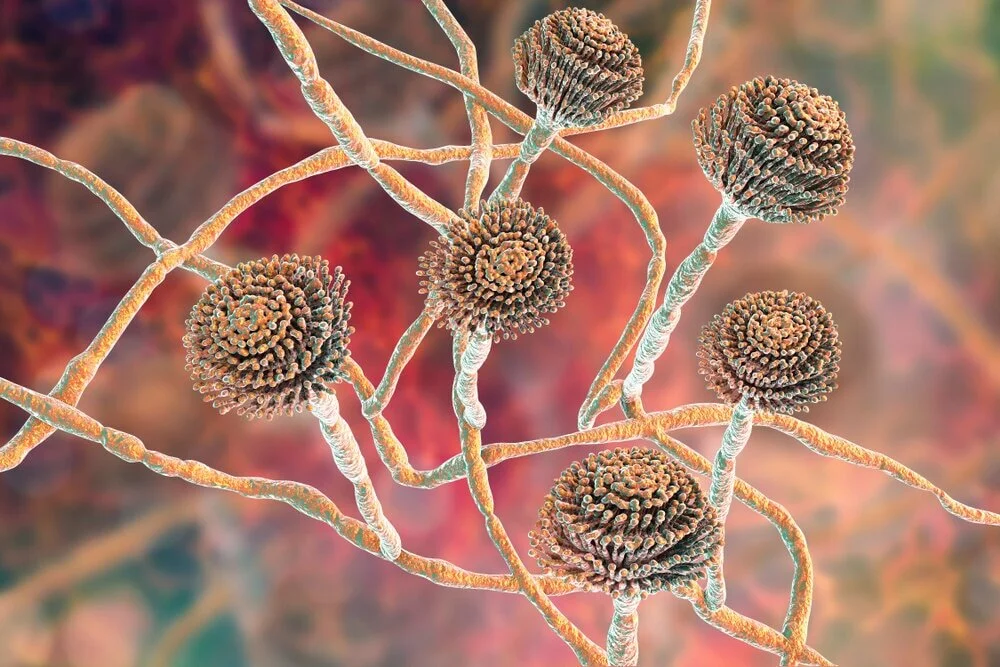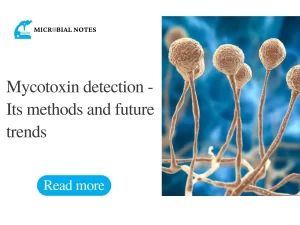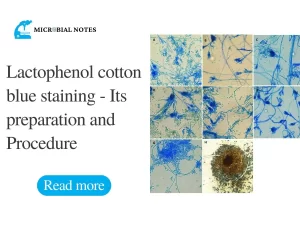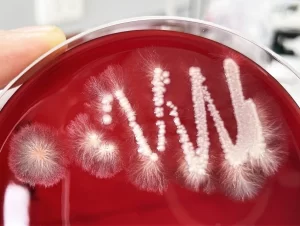Introduction
Mycotoxins are toxic secondary metabolites produced by fungi that contaminate food and feed crops. These toxins can cause severe health problems in humans and animals, making it crucial to understand their properties and effects.
What are mycotoxins
Mycotoxins are naturally occurring toxic substances produced by fungi that grow on various crops, such as grains, nuts, and fruits. They can cause illness and even death in humans and animals that consume contaminated food and feed. Mycotoxins can also cause economic losses due to spoilage of crops and the rejection of contaminated products.
Importance of Studying Mycotoxins
Studying mycotoxins is essential for several reasons. First, mycotoxins are a significant threat to public health and food safety, causing acute and chronic diseases, including cancer, immune suppression, and neurological disorders. Second, mycotoxin contamination can result in significant economic losses in the food and feed industry. Finally, understanding the mechanisms of mycotoxin production and its effects on human and animal health can help develop effective strategies to prevent and control mycotoxin contamination.
Brief History of Mycotoxin Research
The history of mycotoxins dates back to ancient times, with the earliest recorded instance of mycotoxicosis believed to have occurred in Greece in the 6th century BC. However, the scientific study of mycotoxins did not begin until the early 20th century when a group of researchers discovered that a toxin produced by the fungus Aspergillus flavus caused liver damage in animals. This toxin was later named aflatoxin and was found to contaminate crops such as peanuts, corn, and cottonseed.
During World War II, another mycotoxin called ergot alkaloids became a major concern for public health, causing a disease called ergotism. In the 1960s and 1970s, several outbreaks of mycotoxicosis occurred around the world, leading to increased research and regulation of mycotoxins, such as the outbreak of aflatoxin poisoning in England in 1960 and the “Turkey X Disease” linked to aflatoxin-contaminated feed in the 1970s.

Types of Mycotoxins
Mycotoxins are classified into different types based on their chemical structure, occurrence, and toxicity. Here are the major types of mycotoxins:
Aflatoxins
Aflatoxins are among the most well-known and potent mycotoxins. They are produced by Aspergillus fungi such as A. flavus, A. parasiticus, A. nomius, A. pseudotamarii and A. ochraceoroseus and are prevalent in crops such as peanuts, corn, and tree nuts. Here’s more information about aflatoxins:
Chemical Structure
Aflatoxins are polyketide-derived furanocoumarins. There are several types of aflatoxins, with B1, B2, G1, and G2 being the most common. B1 is more toxic than other types.
Occurrence and Sources
Aflatoxins are found in various foods, such as peanuts, corn, cottonseed, and tree nuts. They can also contaminate animal feed, leading to the accumulation of aflatoxins in animal products, such as milk and meat.
Toxicity and Health Effects
Aflatoxins are potent carcinogens and can cause liver cancer and other health problems. In addition, they can suppress the immune system and cause acute and chronic toxicity.
Ochratoxins
Ochratoxins are produced by A. ochraceus, A. carbonarius and Penicillium verrucosum and are found in several foods, including cereals, coffee, and wine. Here’s more information about ochratoxins:
Chemical Structure
Ochratoxins are polyketide-derived compounds that contain a dihydroisocoumarin moiety.
Occurrence and Sources
Ochratoxins are commonly found in cereal grains, such as wheat and barley, and can also be present in other foods, such as coffee, wine, and dried fruits.
Toxicity and Health Effects
Ochratoxins can cause kidney damage, immunosuppression, and carcinogenesis in humans and animals.
Trichothecenes
Trichothecenes are produced by several fungal genera, including Fusarium and Stachybotrys, and are prevalent in grains, such as wheat, barley, and corn. Here’s more information about trichothecenes:
Chemical Structure
Trichothecenes are sesquiterpenoid compounds with a tetracyclic core.
Occurrence and Sources
Trichothecenes are commonly found in cereals, such as wheat and barley, and can also be present in other foods, such as nuts, fruits, and spices.
Toxicity and Health Effects
Trichothecenes can cause vomiting, diarrhea, immunosuppression, and damage to the nervous system.
Fumonisins
Fumonisins are produced by Fusarium fungi such as F. verticillioides, F. proliferatum and Alternaria alternata f. sp. Lycopersici and are prevalent in corn and other cereal grains. Here’s more information about fumonisins:
Chemical Structure
Fumonisins are a group of long-chain sphingoid bases with a tricarballylic acid moiety.
Occurrence and Sources
Fumonisins are commonly found in corn and corn-based products, such as cornmeal, cornflakes, and popcorn.
Toxicity and Health Effects
Fumonisins can cause neural tube defects, esophageal cancer, and other health problems in humans and animals.
Other Mycotoxins
Other mycotoxins include zearalenone, patulin, and Alternaria toxins. Here’s a brief overview of these mycotoxins:
Zearalenone: Produced by Fusarium fungi and commonly found in cereal grains. Zearalenone can cause reproductive problems in animals.
Patulin: Produced by Penicillium and Aspergillus fungi and found in fruits, such as apples, pears, and grapes. Patulin is associated with neurological problems and immunosuppression.
Alternaria Toxins: Produced by Alternaria fungi and commonly found in fruits, vegetables, and grains. These mycotoxins can cause skin irritation, respiratory problems, and other health issues.
Factors Influencing Mycotoxin Production
Fungal species and strains: Different fungal species and strains can produce different types and amounts of mycotoxins. Some fungal species are more prone to producing mycotoxins than others.
Environmental factors: Environmental conditions play a crucial role in mycotoxin production. The following factors can influence mycotoxin production:
Temperature: Optimal temperature ranges vary for different fungal species, but most mycotoxin-producing fungi thrive in warm and humid environments.
Humidity: High humidity levels promote fungal growth and mycotoxin production.
pH: Fungal growth and mycotoxin production are influenced by pH levels, with most fungi preferring slightly acidic conditions.
Oxygen availability: Mycotoxin production requires oxygen, but excessive oxygen levels can inhibit growth and mycotoxin production.
Host factors: The following host factors can influence mycotoxin production:
Crop variety: Different crop varieties can vary in their susceptibility to fungal contamination and mycotoxin production.
Nutrient status: Fungal growth and mycotoxin production can be influenced by the nutrient status of the host plant or substrate.
Stress conditions: Environmental stress, such as drought or nutrient deficiency, can increase mycotoxin production in some fungal species.
Interactions with other microorganisms: Mycotoxin production can also be influenced by interactions with other microorganisms present in the same environment, such as bacteria or other fungi.
Analytical Methods for Mycotoxins
Sampling and sample preparation
Proper sampling and sample preparation are crucial for accurate mycotoxin analysis. The selection of an appropriate sampling plan and adequate sample size is critical for representative sampling. Sample preparation techniques, such as grinding, homogenization, and extraction, are necessary for efficient extraction and purification of mycotoxins from complex matrices.
Chromatographic techniques
Chromatography is a commonly used technique for separating and identifying mycotoxins. The following chromatographic techniques are commonly used for mycotoxin analysis:
High-performance liquid chromatography (HPLC)
HPLC is a powerful analytical tool that separates and quantifies mycotoxins based on their physicochemical properties, such as polarity and hydrophobicity.
Gas chromatography (GC)
GC is another commonly used chromatographic technique that separates volatile mycotoxins based on their boiling points and polarity.
Immunoassay techniques
Immunoassay techniques use antibodies to detect and quantify mycotoxins in samples. The following immunoassay techniques are commonly used for mycotoxin analysis:
Enzyme-linked immunosorbent assay (ELISA): ELISA is a widely used immunoassay technique that detects and quantifies mycotoxins based on their binding to specific antibodies.
Mass spectrometry: Mass spectrometry is a sensitive analytical technique that can identify and quantify mycotoxins based on their mass-to-charge ratios. The following mass spectrometry techniques are commonly used for mycotoxin analysis:
Liquid chromatography-mass spectrometry (LC-MS): LC-MS combines the separation capabilities of HPLC with mass spectrometry analysis, making it a powerful analytical tool for mycotoxin analysis.
Emerging technologies: Advances in technology have led to the development of new and emerging techniques for mycotoxin analysis. These include:
Biosensors: Biosensors use biological components to detect and quantify mycotoxins in samples.
Nanotechnology: Nanotechnology-based techniques have shown potential for sensitive and specific detection of mycotoxins in complex matrices.
Mycotoxin Regulations and Control Measures
International and national regulations
Mycotoxin regulations and standards vary by country and region. International organizations, such as the World Health Organization (WHO) and the Food and Agriculture Organization (FAO), have established guidelines and recommendations for mycotoxin control and prevention.
Maximum permissible limits
Maximum permissible limits (MPLs) are legal limits set by governments and regulatory agencies on the allowable levels of mycotoxins in food and feed. MPLs vary by country and are often based on risk assessments and exposure data.
Risk assessment and management
Risk assessment is a process that evaluates the likelihood and severity of mycotoxin exposure and associated health effects. Risk management involves implementing strategies to reduce or eliminate mycotoxin exposure and associated risks.
Prevention and control strategies
Prevention and control strategies aim to reduce the occurrence and levels of mycotoxins in food and feed. The following strategies are commonly used:
Good agricultural practices (GAP)
GAP are farming practices that aim to minimize mycotoxin contamination by promoting good crop management, storage, and processing.
Good manufacturing practices (GMP)
GMP are manufacturing standards that aim to ensure the safety and quality of food and feed products by implementing appropriate hygiene, storage, and handling practices.
Hazard analysis and critical control points (HACCP)
HACCP is a systematic approach to identifying and controlling potential hazards in food and feed production. HACCP programs can be used to prevent and control mycotoxin contamination at all stages of production.
Mycotoxin-Related Health Issues
Acute and chronic toxicity: Mycotoxins can cause both acute and chronic toxicity in humans and animals. Acute toxicity can lead to severe symptoms, such as vomiting, diarrhea, liver and kidney damage, and even death. Chronic exposure to low levels of mycotoxins can also have adverse health effects, such as immune suppression, growth retardation, and developmental delays.
Carcinogenicity and genotoxicity: Some mycotoxins, such as aflatoxins and ochratoxins, are known to be carcinogenic and genotoxic, meaning they can damage DNA and increase the risk of cancer. Long-term exposure to these mycotoxins through contaminated food and feed can increase the risk of developing liver, kidney, and other types of cancer.
Endocrine disruption: Mycotoxins can also disrupt the endocrine system, which regulates hormones and other physiological processes in the body. Some mycotoxins, such as zearalenone, have estrogenic effects and can lead to reproductive issues and infertility.
Immunotoxicity: Mycotoxins can also impair immune function and increase susceptibility to infections and diseases. This can lead to increased morbidity and mortality in both humans and animals.
Emerging issues and challenges: Mycotoxin contamination remains a significant global food safety issue, with emerging challenges such as climate change, changes in farming practices, and increasing globalization of the food supply chain. These factors can affect mycotoxin production, distribution, and exposure, and require ongoing research and monitoring to develop effective control and prevention strategies.
Future Directions in Mycotoxin Research
Future directions in mycotoxin research involve exploring new avenues to better understand the production, detection, and control of mycotoxins. Some of the key areas of focus include:
Emerging mycotoxins and novel compounds: There is a need to identify new mycotoxins and novel compounds that may pose a risk to human and animal health. Researchers are exploring new methods to isolate and identify these compounds, including the use of advanced analytical techniques.
Advanced analytical techniques: Advances in analytical techniques, such as high-resolution mass spectrometry and molecular imaging, are enabling researchers to detect and quantify mycotoxins with greater accuracy and sensitivity. These techniques are also helping to identify the metabolic pathways involved in mycotoxin production, which could lead to the development of new prevention and control strategies.
Development of new prevention and control strategies: Current prevention and control strategies for mycotoxins, such as good agricultural practices and hazard analysis, and critical control points, have limitations. Researchers are exploring new methods to prevent mycotoxin contamination, such as the use of biocontrol agents, genetic engineering, and chemical treatments.
Cross-disciplinary collaborations and approaches: Mycotoxin research requires a multidisciplinary approach that integrates expertise from different fields, such as microbiology, chemistry, agriculture, and food science. Collaborative efforts are needed to develop effective prevention and control strategies, as well as to educate stakeholders about the risks associated with mycotoxins.
Conclusion
In conclusion, mycotoxins are toxic compounds produced by fungi that can contaminate a wide range of food and feed products. Mycotoxins are a significant public health concern, as they can cause acute and chronic toxicity, carcinogenicity, genotoxicity, endocrine disruption, and immunotoxicity. Therefore, there is a need for continued research on mycotoxins to better understand their production, detection, and control.
References
https://www.who.int/news-room/fact-sheets/detail/mycotoxins
Bennett, J. W., & Klich, M. (2003). Mycotoxins. Clinical Microbiology Reviews, 16(3), 497-516. https://doi.org/10.1128/CMR.16.3.497-516.2003



